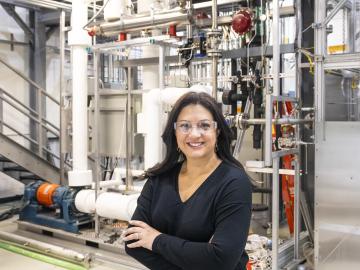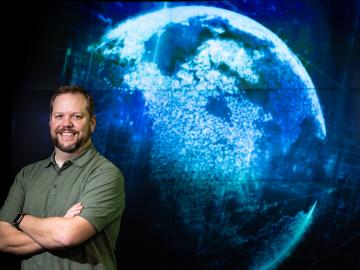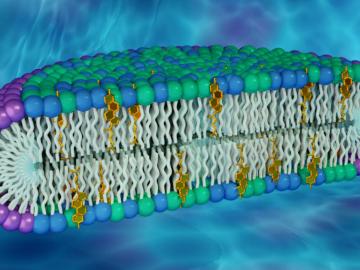
Filter News
Area of Research
- Advanced Manufacturing (2)
- Biological Systems (1)
- Biology and Environment (25)
- Computational Biology (1)
- Electricity and Smart Grid (1)
- Energy Science (26)
- Fusion and Fission (18)
- Fusion Energy (4)
- Isotopes (7)
- Materials (30)
- Materials for Computing (2)
- National Security (17)
- Neutron Science (56)
- Nuclear Science and Technology (17)
- Quantum information Science (2)
- Supercomputing (39)
News Type
News Topics
- (-) Big Data (45)
- (-) Biomedical (42)
- (-) Critical Materials (5)
- (-) Cybersecurity (14)
- (-) Exascale Computing (51)
- (-) Grid (32)
- (-) Microscopy (23)
- (-) Neutron Science (82)
- (-) Nuclear Energy (66)
- (-) Space Exploration (13)
- 3-D Printing/Advanced Manufacturing (56)
- Advanced Reactors (12)
- Artificial Intelligence (77)
- Bioenergy (68)
- Biology (80)
- Biotechnology (25)
- Buildings (30)
- Chemical Sciences (35)
- Clean Water (16)
- Composites (11)
- Computer Science (111)
- Coronavirus (19)
- Education (2)
- Emergency (3)
- Energy Storage (32)
- Environment (116)
- Fossil Energy (6)
- Frontier (44)
- Fusion (38)
- High-Performance Computing (81)
- Hydropower (6)
- Isotopes (33)
- ITER (4)
- Machine Learning (37)
- Materials (51)
- Materials Science (55)
- Mathematics (8)
- Mercury (7)
- Microelectronics (3)
- Molten Salt (2)
- Nanotechnology (17)
- National Security (60)
- Partnerships (36)
- Physics (34)
- Polymers (9)
- Quantum Computing (35)
- Quantum Science (48)
- Security (16)
- Simulation (42)
- Software (1)
- Statistics (2)
- Summit (40)
- Transportation (30)
Media Contacts

Belinda Akpa is a chemical engineer with a talent for tackling big challenges and fostering inclusivity and diversity in the next generation of scientists.

From Denmark to Japan, the UK, France, and Sweden, physicist Ken Andersen has worked at neutron sources around the world. With significant contributions to neutron scattering and the scientific community, he’s now serving in his most important role yet.

Toward the goal of bringing the next generation of nuclear power reactor technology online this decade, ORNL and Analysis and Measurement Services Corporation have successfully completed loop testing of instrument and control sensors for an advanced reactor design for small modular reactors.

Rich Giannone uses bioanalytical mass spectrometry to examine proteins, the primary driver in biological systems.

When COVID-19 was declared a pandemic in March 2020, Oak Ridge National Laboratory’s Parans Paranthaman suddenly found himself working from home like millions of others.

The Accelerating Therapeutics for Opportunities in Medicine , or ATOM, consortium today announced the U.S. Department of Energy’s Oak Ridge, Argonne and Brookhaven national laboratories are joining the consortium to further develop ATOM’s artificial intelligence, or AI-driven, drug discovery platform.

Cory Stuart of ORNL applies his expertise as a systems engineer to ensure the secure and timely transfer of millions of measurements of Earth’s atmosphere, fueling science around the world.

Researchers believe that proteins could behave differently in lipid raft environments, compared to non-raft regions in a membrane, but this hypothesis has not been fully evaluated. One reason is that membrane models used to study membrane proteins rarely contain rafts.

On Feb. 18, the world will be watching as NASA’s Perseverance rover makes its final descent into Jezero Crater on the surface of Mars. Mars 2020 is the first NASA mission that uses plutonium-238 produced at the Department of Energy’s Oak Ridge National Laboratory.

The ExOne Company, the global leader in industrial sand and metal 3D printers using binder jetting technology, announced it has reached a commercial license agreement with Oak Ridge National Laboratory to 3D print parts in aluminum-infiltrated boron carbide.


